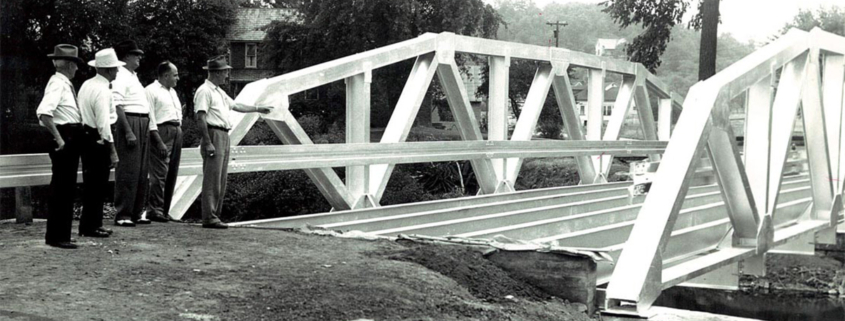From the ancient Roman arches to modern steel suspension bridges, builders have been perfecting materials and techniques used for construction, throughout the history of bridges. In some cases, modern innovations are heavily inspired by ancient techniques, but certain aspects of bridge building have improved throughout the millennia. Here is a brief history of bridge building and what specifically builders have learned through centuries of learning and innovation.
Ancient Societies
The first traceable evidence of bridge-building can be traced back to Babylon in 4000 BC, with a large reservoir that controlled overflow from the Euphrates river. But, although there is no traceable evidence, Assyria and Egypt very well could have been the first societies to build bridges. In ancient China, masonry arches were documented starting around 2000BC, most notably seen in the Great Wall of China.
Probably the best and most recognizable ancient bridge structure is the Roman Arch. The game-changing circular arch form enables the use of longer spans, as compared to stone beams and wood bridges. The oldest Roman bridge that is still standing is the Pons Fabricius, which was constructed in 62 BC and connects Tiber Island to the Campus Martius.
Without these innovations from ancient civilizations, we would not have the architectural marvels of today.
The Renaissance
As the name of the period alludes, the Renaissance was a time of enlightenment, education, and innovation – an era of firsts. In 18th century France, the first “Department of Bridges and Roads” and the “National School of Bridges and Roads” were founded. In England, the Westminster Bridge was constructed, marking the beginning of using caissons instead of cofferdams for the first time in bridge-building.
During the Renaissance, there were many architects who designed and perfected bridges throughout Europe, particularly in Italy. Andrea Palladio, for example, who designed several successful wooden bridges using trusses, which up until that point had exclusively been used for roof supports. In the 16th century, Bartolommeo Ammannati designed the famous Santa Trinità Bridge in Florence and Antonio da Ponte designed the Rialto Bridge in Venice. Many of the bridges constructed during the Renaissance still stand, as a testament to the revolutionary designs of the time.
Modern Bridges
In modern architecture, structural steel is one of the top materials used for constructing bridges. Steel bridges are popular because they are more solid and durable, and they can be built to span longer distances than other building materials. Additionally, steel bridges can be built relatively quickly, since the frames can be constructed off-site and then assembled on-site, and require minimal maintenance and upkeep.
Not to mention that steel creates a stunning result – check out our blog post showcasing the Top 10 Structural Steel Marvels Around the World.
Building the Best with U.S. Bridge
Whether your bridge design is more modern or classic, U.S. Bridge is here to help your vision come to life. We build durable, reliable bridges quickly, using only the best tools and techniques available. Our pride comes from our wide variety of prefabricated bridge designs, which we know will easily meet your unique project needs.
Contact us for a free estimate, or use our industry-leading Bridgescope tool to begin planning your project now!

